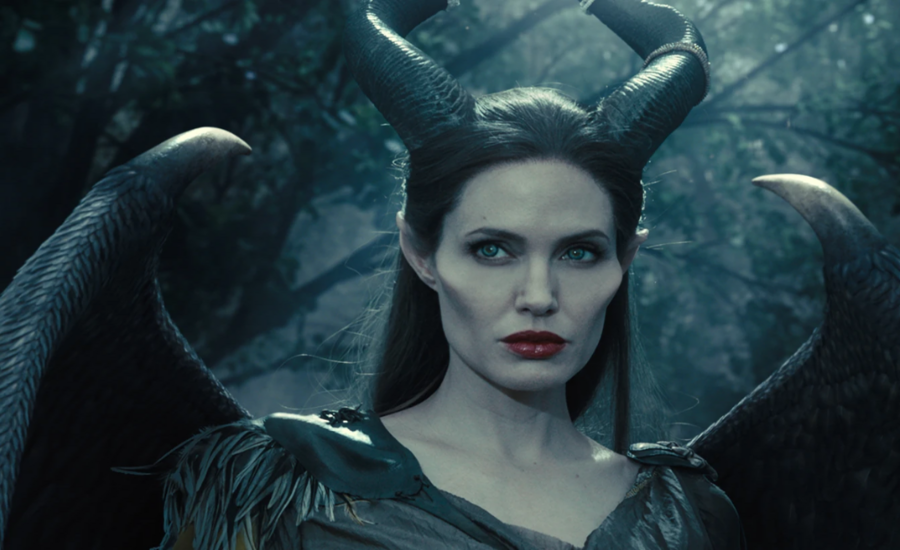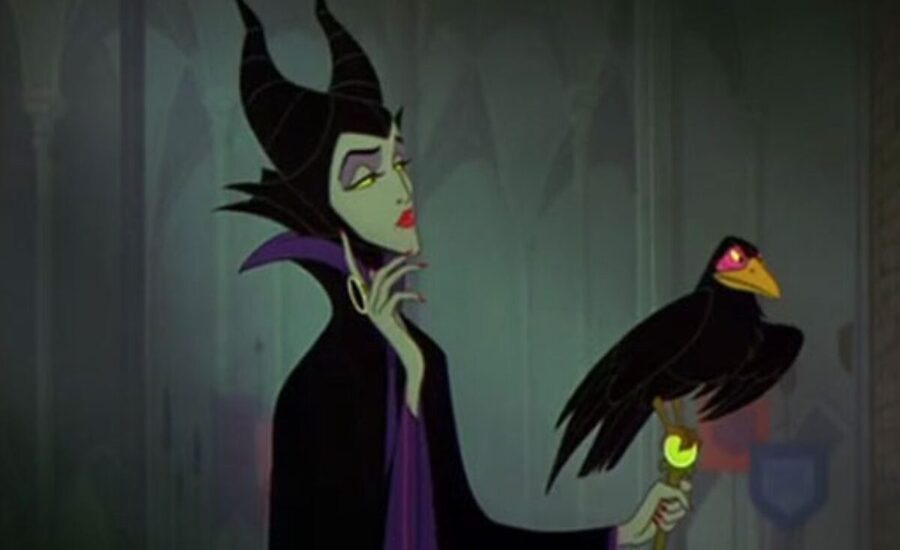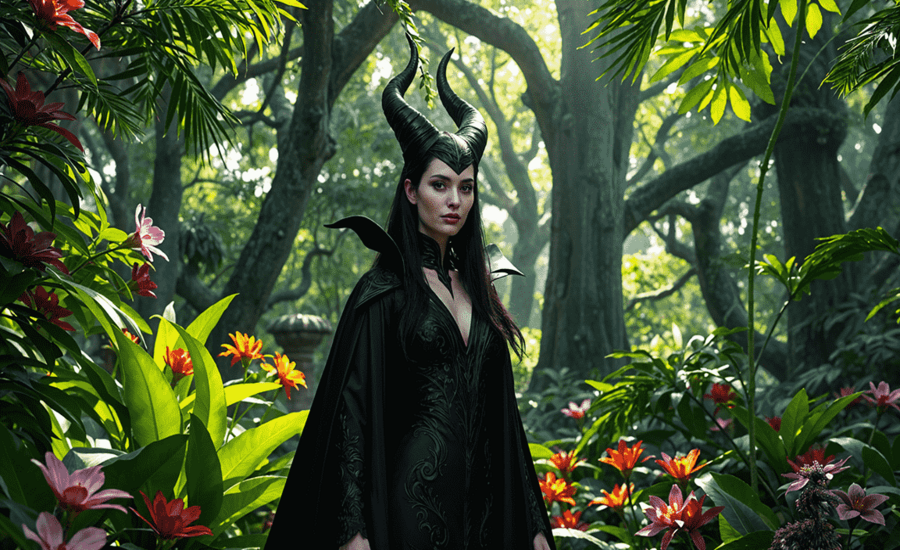Maleficent, the iconic villain from Disney’s Sleeping Beauty and its live-action adaptations, is a character steeped in mystery, power, and complex motivations. She is more than just a villain driven by vengeance. Over time, her portrayal has evolved into one of the most nuanced figures in modern fairy tales, drawing audiences into the depths of her psyche, motivations, and personal evolution. At the heart of this analysis lies the central question: Why wouldn’t Maleficent be a lackey? The answer, as this analysis will demonstrate, is rooted in her autonomy, strength of will, moral complexity, and resistance to manipulation. Maleficent’s character arc, particularly as seen in Disney’s reimagining of her story, cements her as a figure of commanding independence, a woman who would never allow herself to serve blindly under the authority of others.
The Nature of Maleficent’s Power and Its Implications
The most striking aspect of Maleficent’s character is her immense power. From her first introduction in Disney’s animated Sleeping Beauty (1959), Maleficent is portrayed as one of the most powerful beings in the kingdom. She commands magic at a level that far surpasses her peers, capable of cursing Princess Aurora with a single, dramatic gesture. This display of magical supremacy is not just for show; it underscores the autonomy that comes with being so formidable. Maleficent answers to no one, nor does she need to rely on others to achieve her goals. In a world where many powerful figures have armies, advisors, and subordinates, Maleficent operates alone, relying solely on her magical prowess to impose her will.
Her power extends far beyond the practical applications of magic. It is also symbolic of her independence. Magic, in Maleficent’s hands, represents a tool for self-assertion, used to manipulate the world around her and bend it to her desires. In this light, her refusal to become a lackey is not just about rejecting subservience but about maintaining control over her environment. She cannot be controlled or manipulated because her magic is an extension of her will. The mastery she exhibits over it reflects her mastery over herself, making her impervious to the kinds of coercion that might force others into submission.
In Maleficent (2014), this independence is explored in greater depth. Unlike in the original animated version, where Maleficent’s motivations are largely tied to her role as an antagonist, the live-action reimagining dives deeper into her past, showcasing how her power evolved alongside her emotional journey. As a young fairy, she was kind and trusting, but after being betrayed by Stefan, her autonomy became even more pronounced. It is this betrayal that leads to her vengeful act of cursing Aurora, but it is also what reinforces her rejection of authority. Having once been wronged by someone she trusted, Maleficent becomes a figure who refuses to be vulnerable again. Her power grows in proportion to her desire for independence, making her an embodiment of defiance against the forces that would subjugate her.

Moral Complexity and the Refusal to Be a Pawn
Beyond her magical abilities, Maleficent’s moral complexity is key to understanding why she would never be a lackey. In the original Sleeping Beauty, her role as the villain seems straightforward: she is the evil fairy who curses the innocent princess out of spite for not being invited to her christening. However, even in the original portrayal, there are hints that Maleficent’s motivations are more layered than they appear. She acts out of a sense of wounded pride and perceived injustice, not just malice. This implies a moral framework in which her actions, though extreme, are driven by a desire to rectify what she sees as a wrong done to her. This self-justification adds depth to her character and hints at the idea that Maleficent is not simply evil for evil’s sake; she has her reasons.
In Maleficent (2014), this complexity is brought to the forefront. The audience is invited to sympathize with her, understanding that her curse on Aurora stems from a deep sense of betrayal and emotional pain. This shift in perspective transforms Maleficent from a one-dimensional villain into a tragic figure. She is not motivated by a simple lust for power or chaos but by a desire for justice—or, at the very least, revenge for the wrong done to her by Stefan. This moral ambiguity is crucial to understanding why Maleficent would never be a lackey. A lackey serves another’s will, often without question or personal agenda. Maleficent, on the other hand, is driven by her internal compass, flawed as it may be. She acts according to her own code, not someone else’s, and this code is shaped by her personal experiences, values, and desires.
Moreover, Maleficent’s journey in the live-action films demonstrates her capacity for change and growth, further emphasizing her refusal to be reduced to a mere pawn in someone else’s game. Throughout Maleficent and Maleficent: Mistress of Evil (2019), she grapples with the consequences of her actions, particularly the curse she placed on Aurora. She comes to regret her vengeful decision and develops a maternal affection for the girl she once sought to punish. This evolution showcases Maleficent’s internal strength and capacity for introspection, traits that set her apart from typical villains who remain static in their evil. A lackey cannot evolve in this way; they are defined by their submission to another’s will, while Maleficent’s character arc is one of reclaiming autonomy and rejecting the roles imposed upon her by others.
Leadership and Command: Maleficent’s Relationship with Others
One of the most telling indicators of why Maleficent would never be a lackey is her relationship with those around her. In the original animated film, Maleficent has a group of minions—goons who carry out her bidding. However, these minions are largely ineffective, bumbling fools who fail to capture Aurora or fulfill Maleficent’s commands. This depiction of Maleficent as a leader, albeit one with incompetent subordinates, contrasts sharply with the idea of her being subservient to someone else. She commands others, but no one commands her. Even in her moments of frustration with her minions, it is clear that Maleficent views herself as a figure of authority, someone who gives orders rather than takes them.
In Maleficent (2014), her relationship with Diaval, her shape-shifting raven companion, further illustrates her position of leadership. Diaval is loyal to Maleficent, but their relationship is not one of master and servant in the traditional sense. Maleficent often treats Diaval with a level of respect and camaraderie that suggests she sees him as more of an ally than a mere servant. This dynamic is important because it highlights Maleficent’s tendency to build relationships based on mutual benefit and trust rather than domination or subservience. Diaval serves Maleficent because he chooses to, not because he is compelled by fear or manipulation. This underscores Maleficent’s ability to inspire loyalty, a trait that stands in stark contrast to the lackey archetype, which is defined by forced or obligatory loyalty.
Furthermore, Maleficent’s interactions with Aurora also reveal her leadership qualities. Although she initially curses the child out of spite, she later becomes a protector of sorts, watching over Aurora as she grows. By the end of the first Maleficent film, Maleficent’s role in Aurora’s life is not that of a villain but of a guardian. She assumes responsibility for her actions and works to undo the harm she caused, demonstrating a sense of accountability and leadership. This protective instinct further distances Maleficent from the notion of being a lackey. A lackey is disposable, an expendable tool in someone else’s plan, but Maleficent is a leader in her own right, even if her path is fraught with moral ambiguity.

Maleficent’s Independence from Traditional Power Structures
Another key reason why Maleficent would never be a lackey lies in her rejection of traditional power structures. In both the animated and live-action versions, Maleficent stands apart from the established authority figures of the kingdom. In the original Sleeping Beauty, she is an outsider to King Stefan’s court, operating from the shadows and using her magic to challenge the king’s authority. She does not seek to integrate herself into the kingdom’s political hierarchy but rather sets herself up as an antagonist to it. Her curse on Aurora is an act of defiance, a way to assert her power over the royal family and remind them that she is not to be underestimated or ignored.
This rejection of authority is even more pronounced in the live-action Maleficent. After being betrayed by Stefan, who becomes king through his treachery, Maleficent isolates herself from human society, retreating to the Moors, where she reigns as a sovereign entity. The Moors represent a space free from the corruption and deceit of the human world, a place where Maleficent can rule without interference from external forces. Her decision to withdraw from human society and establish her own realm is a powerful statement of her independence. She does not seek power through traditional means—marriage, alliances, or conquest—but through self-sufficiency. By creating her own domain, Maleficent ensures that she answers to no one.
Moreover, Maleficent’s disdain for the human power structures is evident in her interactions with King Stefan in the live-action film. When Stefan betrays her by cutting off her wings, Maleficent’s response is not to seek retribution through traditional channels but to take matters into her own hands. She curses his daughter, an act that bypasses the political and legal systems of the kingdom entirely. This act of vengeance is deeply personal and highlights Maleficent’s rejection of the rules and norms that govern human society. She operates outside of these structures, further distancing herself from the role of a lackey, who would be bound by the dictates of the powerful.
The Role of Vengeance and Autonomy in Maleficent’s Arc
One of the core driving forces behind Maleficent’s character arc is vengeance. However, her pursuit of revenge is not aimless or destructive for its own sake. It is tied to her desire to reclaim her autonomy after it has been stolen from her. In both the animated and live-action versions, Maleficent’s actions are motivated by a profound sense of injustice. Furthermore, in the animated Sleeping Beauty, her curse is a response to being slighted by the royal family. In the live-action Maleficent, her curse is a reaction to Stefan’s betrayal. In both cases, Maleficent seeks to reassert her power and control after it has been undermined.
This pursuit of vengeance is significant because it underscores Maleficent’s agency. Unlike a lackey, who serves at the whim of a master, Maleficent’s actions are driven by her own desires and goals. She is not acting on behalf of someone else; she is acting for herself. This autonomy is central to her character and is what makes her such a compelling figure. Even when her actions are morally questionable, they are always rooted in her personal quest for justice or revenge. She is never a tool in someone else’s plan but the architect of her own fate.
Furthermore, Maleficent’s journey from vengeance to redemption in the live-action films reinforces her autonomy. Initially, her desire for revenge consumes her, leading her to curse Aurora. However, as she watches the girl grow, she begins to regret her actions. This shift in perspective is not the result of external pressure but of Maleficent’s own internal evolution. She chooses to change, to seek forgiveness, and to undo the harm she has caused. This capacity for self-reflection and growth is yet another reason why Maleficent would never be a lackey. A lackey does not have the freedom to change course or act on their own conscience; they are bound by the will of their master. Maleficent, on the other hand, is free to forge her own path, even if that path leads her away from vengeance and toward redemption.

The Psychological Depth of Maleficent’s Character
To understand why Maleficent would not submit to being a lackey, it is essential to explore the psychological depth of her character. Maleficent is not simply a villain; she is a fully realized character with complex emotions, motivations, and inner turmoil. This psychological depth is particularly evident in the live-action films, where her backstory and emotional journey are explored in greater detail.
At the heart of Maleficent’s character is her sense of betrayal. In Maleficent (2014), her initial kindness and trust are shattered when Stefan betrays her for the sake of power. This betrayal leaves a deep emotional scar, shaping her actions for the rest of the film. However, it also gives her a sense of purpose. Her desire for revenge is not just about punishing Stefan but about reclaiming the power and autonomy that he took from her. This psychological motivation sets her apart from the typical lackey, who acts out of fear, obligation, or a desire to please their master. Maleficent’s actions are driven by her internal struggle, making her a much more dynamic and independent figure.
Moreover, Maleficent’s relationship with Aurora adds another layer of psychological complexity to her character. Initially, Aurora is the target of Maleficent’s vengeance, but as the girl grows, Maleficent begins to see her as more than just a pawn in her revenge scheme. She develops a maternal affection for Aurora, which complicates her feelings of hatred and vengeance. This emotional conflict is a testament to Maleficent’s psychological depth. She is not a static character driven solely by a desire for power or revenge; she is capable of love, regret, and change. This emotional complexity is yet another reason why Maleficent would never be a lackey. A lackey is often a flat, one-dimensional character with little room for growth or introspection. Maleficent, on the other hand, is a multifaceted character whose inner world drives her actions.

Key Reasons Maleficent Refuses to Be a Lackey:
- Autonomy and Control: Maleficent’s immense power and magical prowess give her complete control over her environment. She answers to no one, making it impossible for her to become a servant to others.
- Moral Complexity: Her actions are driven by a sense of justice or revenge, not by subservience. Maleficent follows her own code and cannot be coerced into serving another’s agenda.
- Leadership: She commands others but does not allow herself to be commanded. Her relationship with Diaval and Aurora reflects her capacity for leadership and her rejection of subservience.
- Rejection of Traditional Power Structures: Maleficent operates outside the confines of the kingdom’s authority, establishing her own domain in the Moors and rejecting human power structures.
Conclusion:
Maleficent is a character defined by her autonomy, strength, and complexity. From her immense magical power to her deep sense of justice and betrayal, every aspect of her character speaks to her independence. She is a leader, not a follower; a figure of authority, not subservience. Her refusal to be a lackey is not just a rejection of servitude but a testament to her strength of will and personal agency. Maleficent’s journey, particularly as depicted in the live-action films, showcases her evolution from a figure consumed by vengeance to one capable of love and redemption. This capacity for growth, introspection, and leadership ensures that Maleficent will never be reduced to the role of a lackey. She is, and always will be, a force unto herself.
FAQs:
Maleficent is portrayed as one of the most powerful beings in the Disney universe due to her immense magical abilities. She is a fairy with unparalleled control over magic, which allows her to cast curses, transform creatures, and manipulate her surroundings effortlessly. Her power is not just physical but also symbolic of her independence, autonomy, and willpower. In the live-action films, her power is tied to her emotional depth, with her magic growing stronger as she becomes more autonomous and determined to seek revenge or protect those she cares about.
In the original 1959 animated Sleeping Beauty, Maleficent is presented as a straightforward villain motivated by spite after being snubbed by King Stefan and Queen Leah. She is cold, malevolent, and seemingly without empathy. In contrast, the live-action Maleficent (2014) and its sequel explore her backstory, adding layers of complexity to her character. In the live-action films, Maleficent is depicted as a betrayed fairy who seeks revenge after being wronged by King Stefan. Her motivations are more emotionally driven, and she undergoes a transformation from a vengeful villain to a character capable of love, redemption, and forgiveness.
In the animated Sleeping Beauty, Maleficent curses Princess Aurora out of spite for not being invited to her christening, acting out of wounded pride. However, in the live-action Maleficent, her curse stems from a deep sense of betrayal by King Stefan, who mutilated her to gain power. Maleficent’s curse on Aurora is her way of seeking revenge against Stefan, demonstrating her emotional pain and desire for justice after being wronged.









